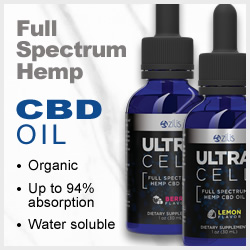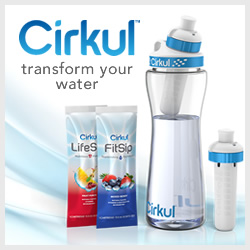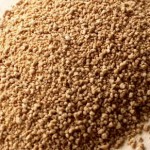Hello, Login
to start. Not a member? Join Today! |
<< Back to eCourse Lesson Menu |
Just about everyone has a little sweet-tooth at least once in a while. In this lesson, you’ll earn which sweeteners you want to avoid and which one’s are healthier options. So when you crave a little something sweet, you’ll know how to make the correct choice.
– Bad Sweeteners (strictly avoid)
White Sugar – Is chemically refined/bleached, all the natural minerals have been stripped out.
Brown Sugar – Is just white sugar with some molasses added back in for color and taste.
Powdered Sugar – Is finely ground “white sugar” that is typically mixed with cornstarch.
High-Fructose Corn Syrup (HFCS) – This common sweetener, found in just about all processed foods, is chemically derived from corn (which is typically GMO). High-Fructose Corn Syrup is made of 50 to 60% fructose. After eating fructose, 100 percent of the metabolic burden rests on your liver. The fatty acids created during fructose metabolism accumulate as fat droplets in your liver and skeletal muscle tissues, causing insulin resistance and non-alcoholic fatty liver disease (NAFLD). For more in-depth information on fructose see Fructose: Is it Killing Your Liver?.
Agave Nectar – Agave Nectar is produced in a similar method as Corn Syrup, by pressing the juice/sap from the plant and then hydrolyzing it with heat and/or enzymes to separate the starch from the fructose. So all you are left with is pure concentrated fructose, about 70 to 80% in the case of Agave Nectar. (Yes even higher than HFCS!) A disturbing fact is that Agave Nectar has been pushed as “safe for diabetics”. But, even the Glycemic Institute has recently stop their trials of it on Diabetics due to severe side-effects.
– Moderate Sweeteners (very minimal use)
SUGAR ALCOHOLS
Xylitol – Is a sugar alcohol, first made from birch trees in Finland. It is now made from beets (US) and corn (China) – both of these are typically GMO (genetically modified). Xylitol is produced by hydrogenation, which converts the sugar into a primary alcohol. When consumed in moderate to large amounts xylitol has been proven to cause gastro-intestinal upset (diarrhea, stomach cramps, etc.). It is also highly toxic, and even fatal, to dogs.
Erythritol – Erythritol is a sugar alcohol similar to xylitol. Just like other sugar alcohols, erythritol is known to cause problems with the digestive tract. Although not particularly dangerous, over-consumption of erythritol can lead to a number of uncomfortable symptoms.
– Healthy Sweeteners (best choices)
Raw Honey – Raw honey is an alkaline-forming food. It doesn’t ferment in the stomach. It’s rich amylase, which is a valuable enzyme that helps to predigest starchy foods like breads. Most honeys found in the supermarket are not raw honey, but “commercial” honey, which has been heated and strained (or filtered). Heating raw honey over 117˚F will partially destroy the valuable enzymes, making it not as nutritious.
Stevia – Stevia is an herb, in the sunflower family, that is native to Central America & South America. The natives used it for medicinal purposes, brewed it as a tea (called bitter mate), and even chewed the dried leaves so they could enjoy the refreshing taste. Stevia’s main characteristic is its naturally sweet taste, however the sweet taste is not due to carbohydrate based molecules, but to several non-caloric molecules called glycosides. Individuals who cannot tolerate sugar or other sweeteners can typically use stevia. It has virtually no calories and is up to 300 times sweeter than sugar – so a little goes along way. Stevia can have a bitter after-taste if too much is used, this and the potency (sweetness level) varies from brand to brand. You can buy stevia extract in liquid or powder form. Since it was banned in the 1990’s unless labeled as a supplement, though, you won’t find it in the “sugar” aisle…so look for it in the Supplement section of your health-food store. And try out different brands until you find one that you like. (My personal favorite is NuNaturals – you can buy it at iHerb.com, just use this code DOJ772 for $5 off your first purchase.)
Note on stevia: You may have recently seen some “supposed” stevia products popping-up on your local supermarket shelves. Namely two brands ‘Truvia’, made by the Coca-Cola Co. and ‘Purvia’ which is made by the Pepsi Co. These are not pure stevia products, but a blend of stevia with added sugar alcohols and such. This is why they can be legally placed in the sweetener section of your supermarket.
– Healthy Sweeteners (in moderation)
Maple Syrup/Sugar – Maple Syrup is a natural sweetener that is made from the sap of some types of maple trees. The sap is made up of about 96% water, so it is boiled down to assume its customary viscosity and sweetness. The boiling process assists in developing the characteristic maple flavor and color, too. Maple syrup is a great source of manganese and zinc.
In the past formaldehyde has been used in the tap-holes of the trees (to keep them open). It is illegal to do this today. But the only way to be certain that the syrup doesn’t have formaldehyde residue in it is to buy only organic maple syrup.
Maple Syrup comes in many different grades. Grade A Light Amber, Medium Amber, Dark Amber, up-to my favorite Grade B which is the darkest grade with the strongest maple flavor (and not to mention the highest mineral content). It is great on pancakes and waffles, as well as the occasional use in baking. Like these Blueberry-Buckwheat Mini Muffins.
Rapadura / Sucanat – Rapadura and Sucanat are unrefined and unbleached “whole cane sugar”. To make this unrefined sweetener the sugar cane is squeezed, dried, and pressed through a sieve. The molasses is never separated from it, so it retains the natural vitamins and minerals. This gives the sugar a light brown color and a natural caramel-like flavor. Rapadura and Sucanat can be used 1 for 1 in place of white refined sugar.
Muscovado Sugar – This sugar, also sometimes labeled as Barbados or moist sugar, is minimally processed cane sugar. It is very similar to brown sugar in that it tastes like and can be used in recipes like brown sugar. Though this “brown sugar” still retains many of the original vitamins and minerals of the sugar cane.
Molasses – Molasses is a thick, brown to deep black, honey-like substance with a robust bitter-sweet taste. It is made when cane sugar is processed. Molasses is very high in many minerals, such as manganese, copper, iron, calcium and more. When purchasing, look for unsulphured blackstrap molasses, buy organic if possible.
Lesson Assignment: Change out some of your high sugar items with some of the better sweeteners listed in this lesson. Try some stevia sweetened tea. Start small with stevia and slowly add more to the item you are sweetening to avoid a bitter after-taste..
Share what drink you tried with others by posting a comment below.






I always thought xylitol was good for you because it would be at a health food store–the same with agave nectar until I read the label and looked at the calories!! I am just so used to the taste of white sugar that Stevia just tastes awful to me–I can give up cakes, sweets and candy but not the sugar in my tea. I have tried so many different sweetners but always go back to sugar : (
Do work through the lessons and you will be a more rounded idea of health. Could it be you have a sugar addition? If you don’t know try going without it for a week and see how it works for you.
Thank you for this info…how does the good ones affect blood sugar and which are best for diabetics?
Diabetics are told to watch their consumption of sugar. Have you ever tried a low sugar or no sugar diet and watched your blood sugar levels and blood pressure? Might be an area of interest.
I have tried to eliminate a lot of white sugar from my diet but when I would try the stevia I never liked it. Maybe next time I will do what you said and try adding a little at a time. Now I do have a question, at our local Walmart they have stevia (I think that’s the one you were talking about) on the sugar isle. Is it different from the stevia you are talking about? The reason I ask is you had said they had banned it from the sugar isle, I think.
Good thought process, yes the stevia at Walmart is different. It is made up of other sugars with stevia added as a minor component. Just look at the ingredients and you will see stevia is not first, which it should be if the product is a stevia product. This is how they get around the law, if the item contains less than 50% stevia it can be sold on the sugar isle.
So where could I find the stevia you are talking about? At a whole foods store?
You can find the real stevia on the supplements isle where the vitamins are kept.
What is “raw sugar”?
Raw sugar is just “white” processed sugar that may have had a little molasses added to it to make it a slightly brown or beige color. It is not in anyway “raw” and is devoid of its natural minerals and enzymes. Raw sugar is just a marketing name to get people thinking it is a healthy sugar, but it is not. Definitely on sugars to avoid list.
Where does Splenda fit in? I checked the label and its ingredients are maltodextrin and sucralose?
Patty.
Splenda is an artificial sweeter, it is chemical altered sugar. They try to confuse people by using the word sucralose, which is close to sucrose and most think this is just sugar. There is a whole dark side to this sugar-free product. Here is an article that explains more about it. http://www.cookinggodsway.com/artificial-sweeteners-vitamins-healthy/
We love our sweets also. We switched to “healthier versions” (Xylitol, cane sugar) but, I also use raw honey and stevia. I need to find a balance with these two as I don’t care for the strictly honey flavour or stevia either.
I have found that putting coconut oil in my afternoon coffee (easiest way for me to take it) cures my need for a night snack. Yay!
I don’t have diabetes, but I do think I’m (at least psychologically) “addicted” to sugar, and I think the best thing for me is just plain “cold turkey”: no sweeteners of any kind whatsoever. I get a sweet taste in my mouth, doesn’t matter from what, and the next thing I know I’m in the fridge and cabinets scrounging for candy, cookies, chocolate chips, jelly, whatever. But I did find the lesson very helpful, because I had been substituting agave syrup for the sugar in the treats I make for my family. Now I know to throw it out — it’s worse than the HFCS I so diligently avoid! I’ll switch to honey.
Keep on with the lessons to see if you discover the issue with sugar.
Very interesting info. Agave…who knew? I also had it on my list of things to try. I’ve crossed it off 🙂
I do a lot of baking and was wondering about exchanging raw honey for the sugar? If this is a good idea – what would the ratio be? Another question about the Sucanat – is it okay to blitz it in a blender to make it finer? (for quicker dissolving in recipes…)
Thanks!
You can certainly exchange sugar for honey in most recipes, though some adjusting may be needed. It seems the general rule of thumb is to replace each cup of sugar with 2/3 to 3/4 cup of honey. Note you will also need to adjust the liquid in the recipe as well (lower it slightly) to compensate for the extra liquid “honey”.
I have blitzed Sucanat in my blender before to make homemade “powdered sugar”. So I can say that would work fine.
Thank you so much for these lessons. It´s been great so far.
I was just wondering about coconut sugar? Is that on the “good in moderation” list?
Coconut (Palm) Sugar is fairly new on the scene, at least in the states. So it seems there are varying camps on whether it is good or not. Some say it is a great natural “healthy” sweetener and some say no. For this reason I put it on the “moderation” list, at least for me personally. I do occasionally use it in my herbal coffee, but try not to use it too often.
I noticed you didn’t mention coconut palm sugar..would this fit in with the healthy sweetners( in moderation?) I’t is very minimumlly processed,low glycemic and has potassium and vitamins in it.
I would like your thoughts on this. Thank you
I am learning some new things that will help me in the future.
Coconut (Palm) Sugar is still relatively new on the scene, at least in the U.S. From everything I’ve been able to gather it is like other sweeteners…. fine in moderation.
I have to admit I was totally clueless when it came to the xylitol. I buy gum as a treat for my children once in a while that is sweetened with xylitol. Now I know better!
Glad you are learning, we are all on that path. – Jeff
I had recently bought some xylitol and truvia (before I did the “sweeteners” video) and didn’t have any of the “healthy” alternatives. But, I did make some homemade hot chocolate using the xylitol and truvia and liked them pretty well. It did have a bit of that “fake sugar” aftertaste, which I didn’t care for so much. BUT, maybe when I get some GOOD stuff, it will taste better. 🙂
I had no idea about the agave and the sugar alcohols! Such good information to have!
So, where does commercial honey fit into this list? Is it just as bad as the refined white sugar?
Glad you like the info, we learn something everyday! Commercial honey, wow that is a can of worms to open. That will be addressed in an article, later. I will say it is always better to get local honey that is raw, under 117 degrees in processing. Do call the maker and ask the questions about their processing.
I’ve already started using honey and powdered stevia in baking. The stevia takes some getting used to, but will be good I think.
Hello,
I was wondering about evaporated cane juice crystals. Are they the same or similar to Sucanat or Rapadura?
Evaporated Cane Juice Crystals are a refined sugar, like “white” sugar is. It has been processed so much that all the minerals have been stripped out. This can react in a negative way to your body causing all sorts of issues. (Including, but not limited to: Leaching minerals out of your teeth, and in-turn causing tooth decay. Read more about this issue in Ramiel Nagel’s extremely enlightening book “Cure Tooth Decay: Heal And Prevent Cavities With Nutrition”)
So you want to look for Rapadura or Sucanat, one of those should be easy to find in any upper-scale super market or online. Those two sweeteners are naturally made and have their minerals intact. Though keep in mind with all sweeteners, natural included, moderation is key.
Hi, Im very happy for this what your doing with all this info. I want to ask about the agave, I understand that raw agave has no heat in the process, is it true? I bought wholesome raw agave to give it a try! A friend told me that wholesome is a good company.?
Oh! and what about turbinado sugar?
Turbinado Sugar is just “white refined sugar” with a little molasses added in for color. So no, I would not recommend using it.
Mary, I would avoid all Agave. It is very high in Fructose, which has been shown to contribute to NAFLD (non-alcoholic fatty liver disease) among many other health issues.
As far as “Raw” Agave, technically there is no such thing because of the way it is processed. But do steer clear of all Agave to avoid health issues.
Great info! I’ve never used agave, but always kept it in my “to try” list an alternative, now I know. And thanks for letting us in on stevia, I have tried the new stevia products but I wondered why there was other fake sweeteners in the ingredient list.
I have been looking for a sugar replacement but Honey wasn’t some thing We could do as a family so this is great to read. I am glad to find thes site and class.
Thanks for your compliment it helps fuel us. Keep in mind sugar is sugar, so moderate. Even too much honey will make me a fat lazy bear. 😉 – Jeff
I am very grateful for this course. I was confused about Agave but now I am clear. I was wondering, is Coconut Palm Sugar safe for diabetics? I purchased some from Wilderness Family Naturals for this reason. I never knew that fructose caused fat droplets in the liver. I was diagnosed with NAFLD disease about 5 years ago and I am also insulin resistant.
Coconut Palm sugar has a glycemic index of about 35, which is fairly low. So it may be a good choice for diabetics, but in moderation (you should speak with your doctor/Naturopath to see if it is right for you).
We know that sugar causes inflammation in the body. So all sugars and sugar forming foods should be consumed in moderation anyway, diabetes or not.
Thanks for setting me straight on agave. It was so easy to just follow others & not check it out for myself. Now I know.
Great info…especially on agave…I passed it along to my dtr who is still using it and told her she should sign up for this course!
I have palm sugar from the date palm rather than coconut palm. I was reading that coconut farmers would sell the coconut sugar for quick money, but if they do that then no coconuts are produced by that tree…I love coconut flour since I’ve had to go grain free. I make a palm sugar syrup that I use in place of agave nectar to keep the liquids the same as recipe requires (which is important in gluten free/grain free cooking).
So excited to learn more about sweeteners and start using them instead. I had switched to evaporated cane juice because my daughter was reacting to the chemicals in white sugar. I didn’t want to say “no sweets” when we found the problem since she was seriously addicted (me, too.) Now she doesn’t like things as sweet and I think I change things again to healthier sweeteners with minimal complaint. We started, but have so much more to learn.
We have most of these sweeteners on hand so
TabithaT, it is all about small changes that you keep overtime. When we make large changes we usually don’t stay with them. But small changes overtime can equal big changes. 🙂 Keep going overtime sugar additions can be broken. It took us about a year and now when we want some chocolate we just get a small square of 100% cacao. 75% cacao bars just taste too sweet now. Just make your changes slow and steady. – Jeff
I have bought “pure cane sugar” at Sprouts before. It is fair traded and I thought it was healthy since it is not the typical white looking sugar. It is more brownish looking. Is this the same as Rapadura? Thanks for your help!
Jackie, it sounds like the sugar you bought was just basically “white” sugar with a little (and I mean a smidgen) molasses added to it for color. Rapadura or Sucanat will be labeled as such on the bag, it has a distinctive brown crumbly look too. Here is a photo (at the right):
Both Rapadura and Sucanat can be harder to find around here. That is why I usually buy it in bulk from Amazon. Sucanat OR Rapadura
I have heard Stevia is from a plant. How then is it transformed into the powder, extract, and liquid? I have also tried Stevia with the Luo Han extract and it seems to be WAY too “sweet” tasting. I do not recommend it blended with the Luo Han.
I love making “sweet” tea! :)(Southern girl here)
Stevia is from a plant and is naturally calorie-free. It’s 300X sweeter than sugar, so a little goes a long way. In fact if you use too much it can tend to be bitter.
I am not exactly sure on how it is processed. I believe the leaves are pressed to make the liquid and the dried leaves are crushed to make a powder. Green powder is more natural and the white, typical, powder is a little more processed.
I have not tried LoHan, but I’ve heard of it.
I buy crushed, dried stevia leaves at an herb shop to use in my teas and use the white powder sometimes when baking. I also use the liquid in smoothies, yogurt, herbal coffee, or tea sometimes.
Hi, I was wondering about coconut nectar….how does it fit in with other sugars?
lorigroen, Yes coconut nectar is another alternative sugar. It has a glycemic index of 35, lower than a banana. It can be gluten free. Just use caution and keep its use small, just like all sugars.
Questions… What is Sorghum? I’ve also seen Brown Rice Syrup? How healthy are these? I don’t know how they are made.
Hi Suzicakes, I take it you are talking about Sorghum Syrup. This is a harder to find syrup which is costly $7-8 range. A big plus is that traditionally herbicides, insecticides, and fungicides are minimally used if at all in the production of sorghum syrup. Compared to Molasses it contains around half the carbohydrates, but is sweeter tasting. While molasses is a by product of sugar production, sorghum syrup is a whole food, one tablespoon of the stuff meets an adults daily requirement of potassium.
Brown Rice Syrup is about half as sweet as sugar, can be gluten and wheat free, which could be good for people with those issues. Since it is not a main stream product it usually is farmed using eco-friendly methods. Being rich in vitamin B, niacin, vitamin B6, and vitamin K, helps it to be labeled as a more healthy sweetener. A drawback is many find it does give a background taste of rice and often other sweeteners are added to recipes to hide this.
Of the two syrups I would go with the sorghum as it is processed minimally, very similar to the maple syrup process. As with all sweeteners moderation should be practiced.
Thanks for the good info. I’m really looking forward to learning more ways to add healthy choices to my life! :o)
I live in the midwest & have seen a field of sorghum/milo. [It’s really strange looking- tall variety is for syrup & short kind is for seed for feed.] They sell the brown rice syrup here, but it’s not something I’ve tried. I remember liking molasses growing up, even though it does have a strong taste. I really don’t use a lot of sweeteners. I have stevia (my mom uses it in iced tea) & grade B organic maple syrup (I have to drive 125 miles to get it. I used it when I’ve done the “master cleanse.”). I have also used white sugar when I’m making “Kombucha Tea”- maybe I can switch that to something else…
Thanks again, Suzicakes